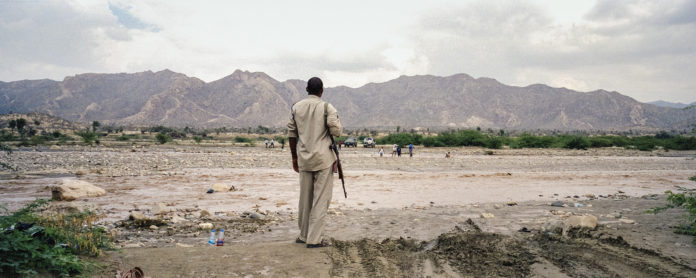
Almost half of all people in Somalia don’t have enough food, according to Save the Children. The factors are complex, but a core one is the persistence of drought, combined with erratic weather like the recent floods in the Hiraan region.
So climate change is making life more precarious in Somalia, which is already dealing with decades of civil war and the displacement of 2.6 million Somalis displaced from their homes. And militant groups are exploiting these vulnerabilities, according to a new policy paper by the Stockholm International Peace Research Institute (SIPRI), “Climate-related security risks and peacebuilding in Somalia.”
“Somalia is among the most climate-vulnerable countries in the world,” authors Karolina Eklöw and Florian Krampe write. The country has some of the highest mean annual temperatures in the world, and heavy winds damage infrastructure. Drought has been devastating, uprooting 53,000 people. It has also reduced the food supply, increased food prices and hunger, and made coastal groundwater more saline.

The more punishing climate is damaging means of earning a living, as most Somalis rely on agriculture, forestry, or fishing for their food and their income. For instance, long-used grazing routes don’t offer much food for livestock anymore. So nomadic herders (94% of whom live in poverty) need to find new pasture or new livelihoods. This brings them into conflict with non-nomadic communities, overland as well as water. Meanwhile, the amount of cultivable land is diminishing due to land degradation and other environmental processes, leading to rising tensions between different clans attempting to hold onto land.
But Somali mechanisms for resolving conflicts and responding to environmental crises have been hurt by war and displacement, including the migration of elders and traditional authorities. “Although herder and farmer clashes have always occurred, they are now harder to solve,” the SIPRI paper notes. Whether people are fleeing conflict or climate crisis, or the complex interplay of the two, social and political structures are being massively disrupted.




























